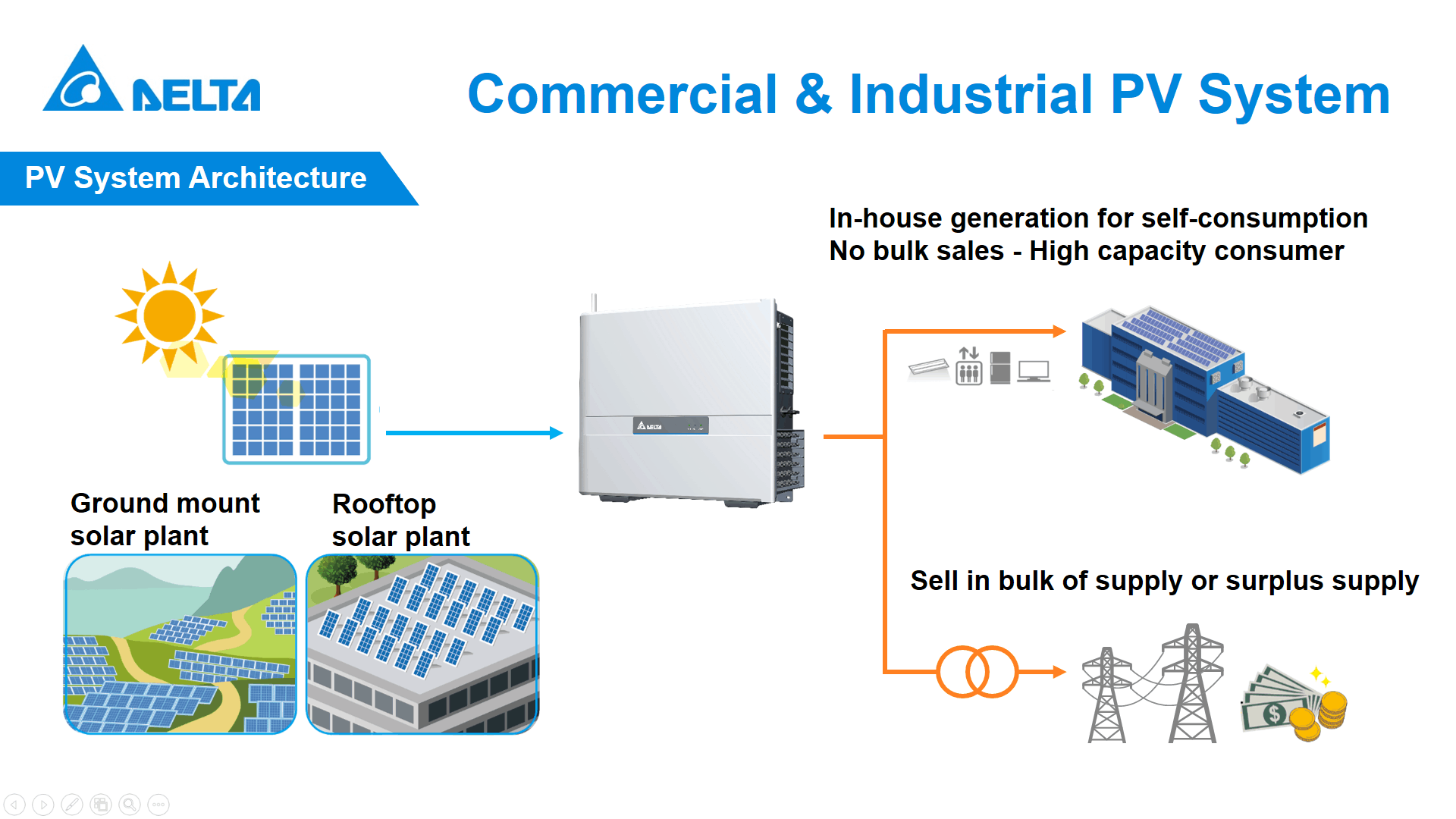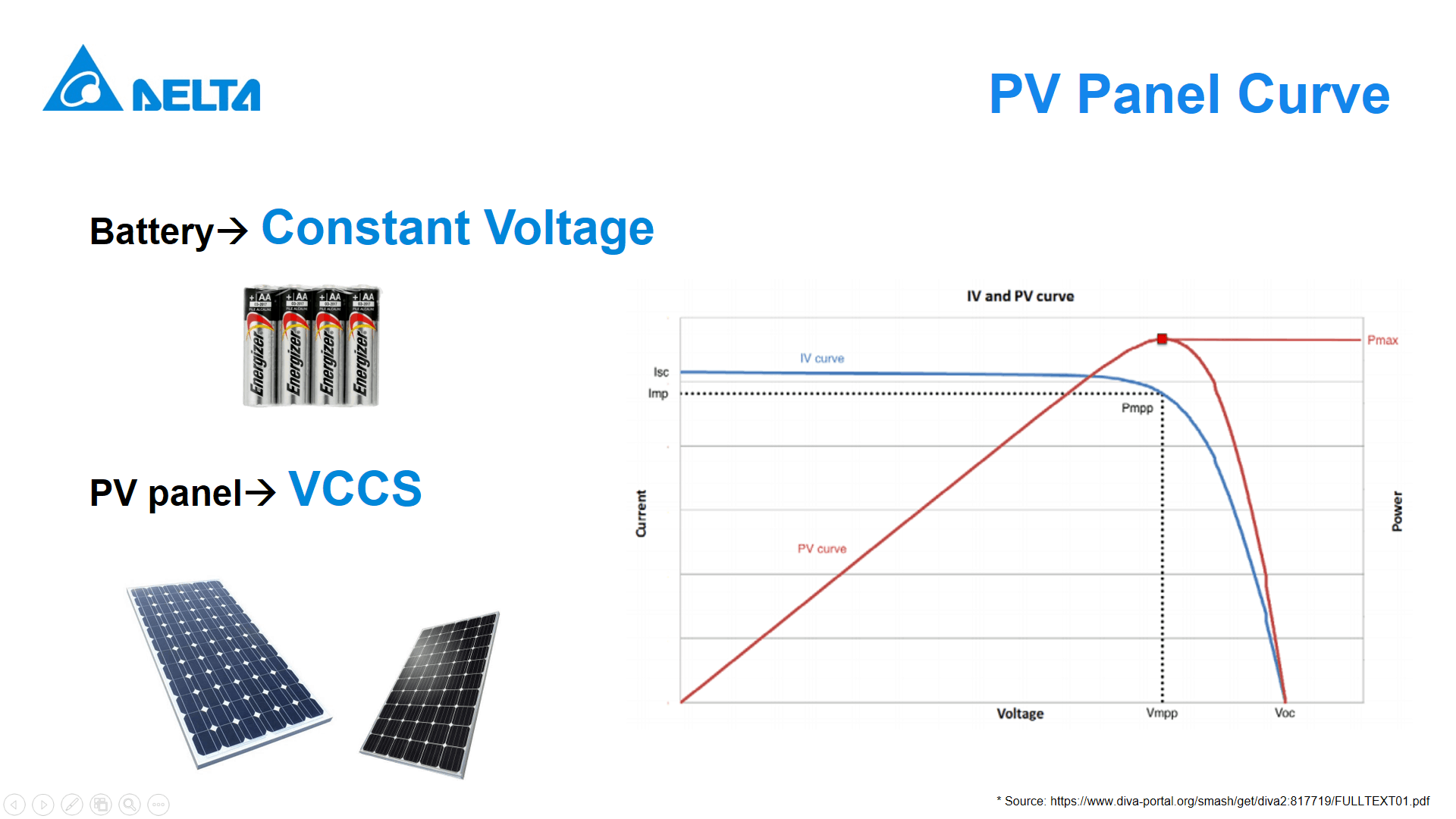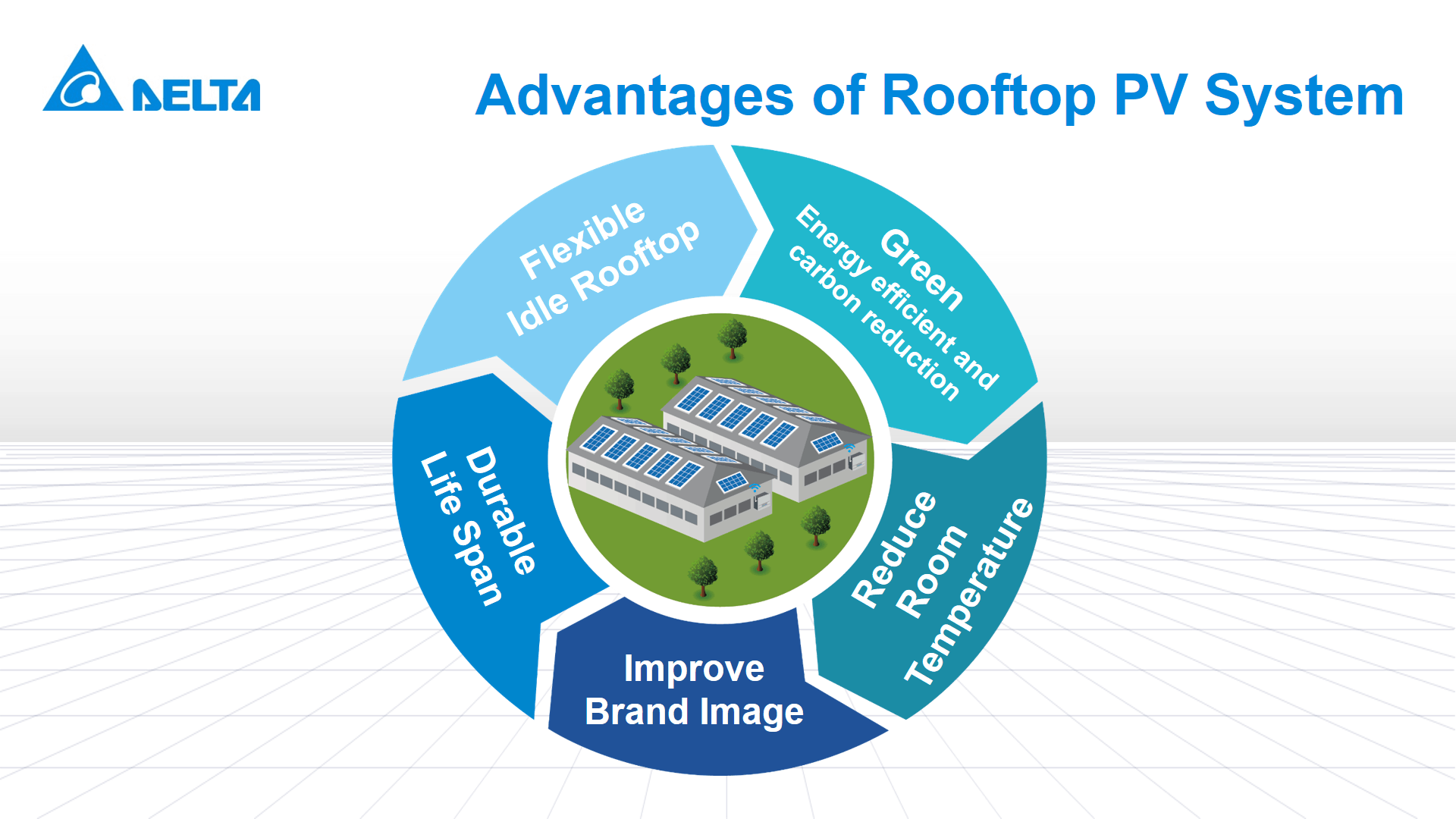For corporations to respond to Taiwan’s governmental energy policies and global supply chain trends, they must establish plans to implement renewable energy systems. Considering the degree of technology maturity, cost, and spatial planning, among existing renewable energies (e.g., solar power, hydropower, and wind power), the most feasible plan is to establish a rooftop photovoltaic (PV) system. Implementing green energy strategies requires a basic understanding of the structure of such systems so that informed decisions can be made when planning which specific technologies need to be selected.
Explaining rooftop PV systems from scratch
What is a PV system? In simple terms, the entire system comprises three parts. First is the PV panels (i.e., solar panels), which are commonly installed on the ground, on rooftops, or on bodies of water. Second is the inverter. Because PV panels use photons from sunlight to generate DC electricity, this needs to go through an inverter to be transformed into AC power for use.
Third is grid connection equipment for supplying AC power to the grid, which is divided into two situations. The first case refers to factories or offices that self- consumption the energy they generate. In Taiwan, the Renewable Energy Development Act states that electricity generated under this method must be consumed and cannot be sold in bulk to local power supplier. The second case refers to the partial or full sale of electricity to Taiwan Power Company. Although this situation is not covered under regulations for energy-intensive consumers, such systems can operate in parallel with and supply electricity to the main grid. However, if the generated electricity cannot satisfy basic on-site operations, the grid will compensate the insufficiency.
How to maximize the benefits of PV panels with maximum power point tracking
PV panels are like common batteries in that both are essentially energy-conversion devices. However, the operation principles behind PV panels and batteries are not entirely the same. A common battery provides a constant voltage source. It uses chemical reactions to stably convert chemical energy into electric energy. By contrast, the transmission efficiency of PV panels changes according to the amount of available sunlight, and so its voltage must be controlled to generate the corresponding current. This is achieved through voltage-controlled current source designs.
Controlling the voltage can be achieved through maximum power point tracking (MPPT). Common methods include voltage feedback, power feedback, perturb and observe, incremental conductance, actual measurement–open circuit voltage, actual measurement–short-circuit current, and linear approximation. To date, the most commonly adopted method in both academia and industry is the perturb and observe method. This method has a simple structure and is easy to control. Its basic principle is to use a controller to increase or decrease the voltage of the PV panels at a small scale and to measure the increase or decrease of the output power. The entire tracking process is like mountain climbing. If the IV and PV curves do not reach their peak, then the voltage will keep increasing. Conversely, if they exceed the peak, then the voltage will decrease. When the optimal work point of the PV panel is established, they can generate the maximum power benefit.
As previously explained, the function of an inverter is to convert DC into AC. The design trend of inverters has changed from central-type to string-type inverters. Internationally, many large-scale sites adopt the string-type design. Compared to the central type, the advantages of string-type designs include their small size, lightweight and flexible design, low technology threshold for maintenance and operation (just replace one machine with another), low construction cost, and higher number of MPPT channels. Collectively, these factors result in more favorable electricity generation performance on sites with the rooftops facing different directions.
Rooftop PV systems for factories and corporate offices—Policies and supply chain trends
PV inverters can be implemented in three situations: outdoors, on factory or office rooftops, and in large-scale power stations. Their output capacity needs to be evaluated based on the circumstances of each site. For corporate offices, rooftop PV systems are a better choice. As the name indicates, these systems are installed on the rooftop of existing factories or offices. They are energy-saving and can reduce carbon emissions, helping corporations meet government requirements on renewable energy ratios. They also improve a corporation’s image. Compared to ground-type PV systems, rooftop systems can effectively reduce indoor temperatures, lengthen the service life of the rooftop, and utilize idle space without requiring additional area for installation. Moreover, because they are close to the place where the electricity is consumed, energy loss from long distance transmission can be minimized.
When selecting PV equipment, factories or corporations with limited space can opt for high-capacity inverters. If they are concerned that the PV system may be difficult to maintain and operate, then they can choose inverters that are easy to use, can be managed remotely, or have string current monitoring functionality. If their rooftop is not quite even, then they can choose inverters with multiple MPPT.
Rooftop PV systems can be used for investment or to generate energy, and they are less controversial than ground-type PV systems. They have been promoted successfully in countries such as Germany and Australia due to policies promoting subsidization and bulk purchase incentives. Currently, in addition to establishing regulations for major power consumers, the Taiwanese government has set the goal of reaching 6 GW by 2025, and they encourage corporations and the general public to install rooftop PV systems. Under the drive of governmental policies and global industry trends, we believe that Taiwan can successfully continue on its path toward achieving the country’s energy transition goals.
Interested in rooftop PV systems? Talk to a Delta expert [contact-form-7 id=”891″ title=”Contact Delta for more details”]




